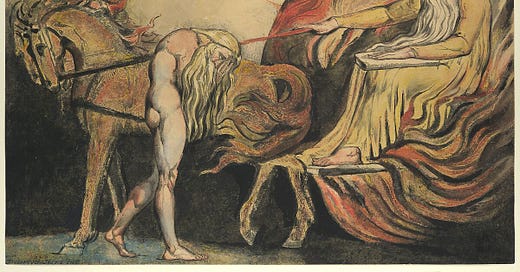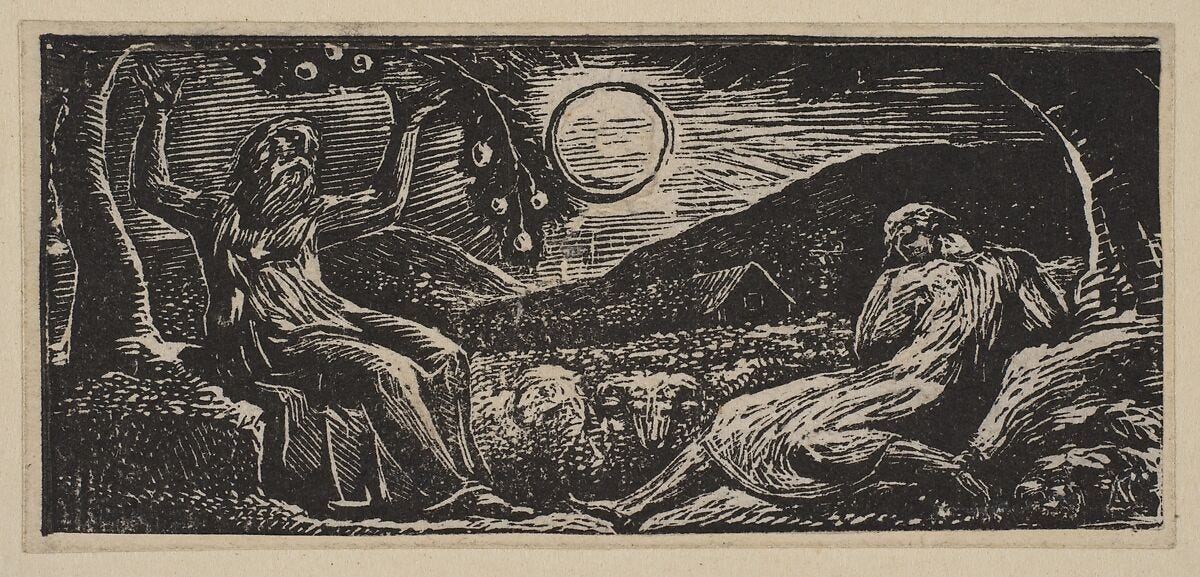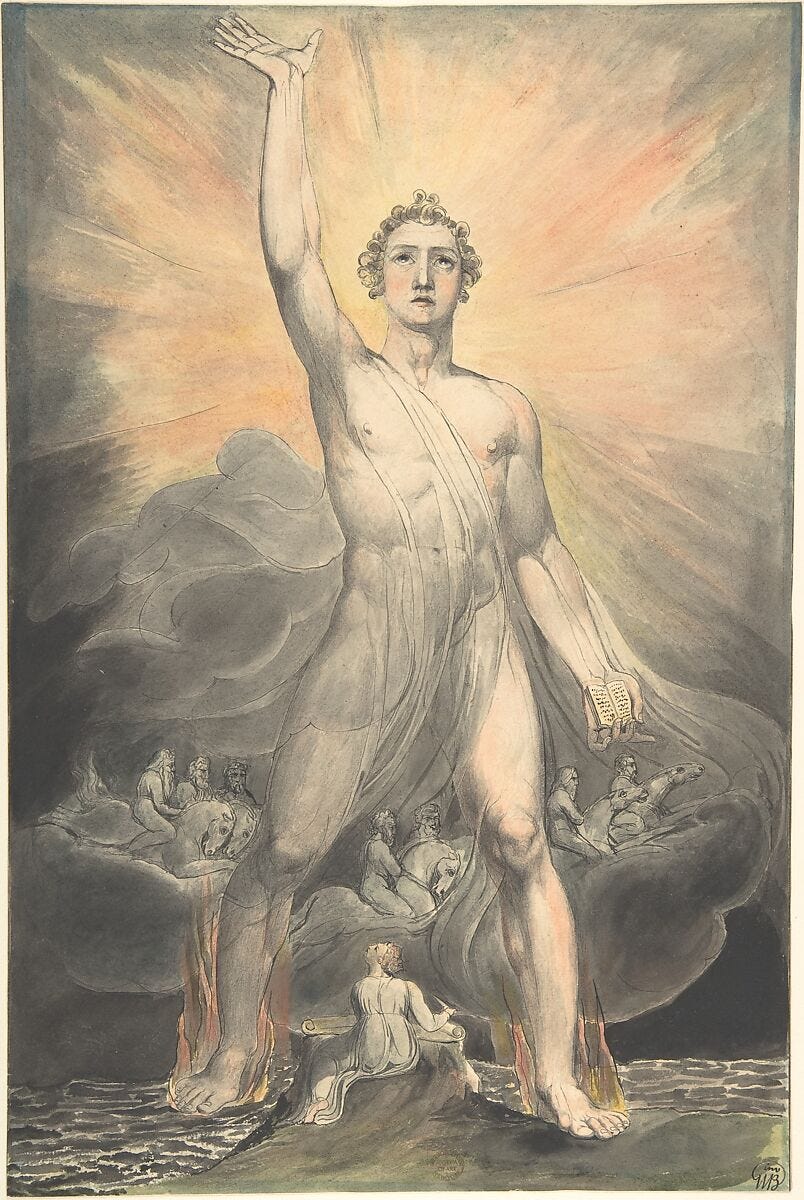I started with free verse, then a very quick look at the villanelle…
But, in my quest to explore older forms of poetry as well as religious art, I decided to look at a specific Poet: William Blake.
Blake was born on Nov. 28, 1757 in London to a pretty ordinary family. It seems that he didn’t have any formal education other than in art. When he was 10, he was apprenticed to an engraver called James Basire, Sr.
After working for a couple of years, Basire sent Blake to copy Gothic churches, including Westminster Abbey. And here, Blake claimed to have visions of a procession of monks, hearing their chants, as they were lead by Christ and the Apostles. These visions, he claimed, started early in life. He saw many beautiful, religious visions which inspired his creative life.
The above etching is his “God Judging Adam” done in 1785. Notice how the naked Adam reflects the image of God. And I love the flames, the yellows, reds, and oranges. Blake invented a way to do the etching in relief, then colors were put on a millboard, printed on the sheet, and then he would go back in with watercolor and ink to fill it in. This a both creative and full of craftsmanship.
And this one, “Thenot Under a Fruit Tree, from Thornton's "Pastorals of Virgil":
It is a visual representation of Robert Thornton's “Pastorals of Virgil.” It shows the shepherd Thenot under a fruit tree with another shepherd and the flock.
Blake didn’t only do etchings and engravings. In 1779 he became a student at the Royal Academy of Arts to study painting. It seems while he was there, he didn’t like the paintings that were in fashion, but preferred the works of Michelangelo and Raphael.
Of course, his paintings were uniquely William Blake, like these two:
Angel of the Revelation (Book of Revelation, chapter 10)
The Angel Appearing to Zacharias
What I really want to talk about, isn’t the etchings or the paintings, but the symbolism Blake uses. Look at Angel of Revelation and how see how he stands like Colossus of Rhodes. The Seven Thunders in The Book of Revelations are the horsemen riding in the sky. And there is Saint John the Apostle, having the vision, writing.
The Angel Appearing to Zacharias depicts the Archangel Gabriel coming to Zacharias to announce that his barren wife, Elizabeth, will conceive a son—John the Baptist. Zacharias was a high priest. But notice the incense which is prayers rising to God. Notice the fire on the altar and candles of the Menorah, both are out shone by the light in the top center of the painting—the Holy Spirit.
This is all really interesting, we can see what Blake’s imagination and visions look like as physical object rather than words on a page. It’s not often we get to see paintings or drawings from a poet. The style is early Romantic. It is very idealistic, full of symbolism, supernatural, and very dreamlike.
His art, writing, life, religious beliefs, politics… They all get pretty complicated and can take you down many paths to explore. But for now, I just want you to look at these images and take them in.
Next week, I’ll tear into two of his poems. And maybe with these paintings in mind, we can visualize the images that he writes…
I love sharing my poetry and photography without gatekeepers or a paywall. I’ve added a Buy Me A Coffee button. If you liked this piece, I would be honored if you supported my work by buying me that sweet, sweet fuel that I run on.







